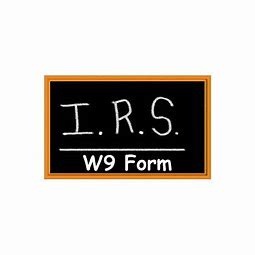UPDATED 12/17/2019
It’s that time of year again when, as a business owner, you have to start thinking about 1099ing folks. There’s a lot to it but we’re going to think about it with you.
REINFORCING THE BASICS.
What is a Form 1099 again? It is a calendar-year information return that reports miscellaneous payments to non-employee individuals. Information returns are meant to encourage people to report all their income or in the words of the IRS, “to increase voluntary compliance and improve collections.” That must be why there are 20 of them in 2019. We’ll tackle Form 1099 week after next (11/28). Next week we have decided to hook you up with some Thanksgiving Day trivia. First things first.
WHAT SHOULD I DO FIRST? Why the W-9, of course!

FORM W-9, Request for Taxpayer Identification Number and Certification. If you are required to issue an information return (Form 1099) to someone, for example: 1099-DIV, 1099-INT, 1099-B, 1099-S, 1099-K, 1099-C, 1099-A, 1099-MISC, or Form 1098, you absolutely should get them to complete and give you a Form W-9.
Form W-9 can be accessed at: Form W-9
REQUESTING A COMPLETE AND ACCURATE FORM W-9.
It is super important to get your vendor/payee’s Name and Business Name correct. The purpose is for the IRS to follow the flow of the income from your checkbook/income statement to your payee’s Form 1040. So, what you would look for is their own personal name on Line 1 and then their business name or dba on Line 2. It should be the same name if a C Corporation and it could be the same name on both lines if it is an individual/sole proprietor or a single member LLC. Some examples would be: Dr. Dre / Beat Electronics (before selling to Apple for $3B); Donald Obama / All American Draining Swamps Services; George Slate / Bedrock Quarrel & Gravel Company. 
If the person you pay didn’t think up a business name for themselves: Joseph Nobusinessname / Joseph Nobusinessname.
Never be quick to assume that a checked Limited liability company in Box 3 is correct. This box is only checked when the payee is an LLC owned by another LLC. The kid LLC (your vendor/payee) should know whether their parent (owner) is a C or S-Corp and accordingly check the appropriate box.
No less important is being sure your payee gives you the right Taxpayer Identification Number (TIN). If they have employees, they will have an Employer Identification Number; if not they will provide you their Social Security Number. The same goes for when your payee is a single-member LLC, disregarded entity, which is basically an incorporated sole proprietorship. If your vendor is in the middle of getting a TIN, they will have written “Applied For” in Part 1, Taxpayer Identification Number. We suggest following up on this as a missing TIN will eventually cost you time and money.
HOW WOULD I EVEN KNOW WHAT’S CORRECT AND WHAT’S NOT?
First, review for completeness and accuracy. You need R & R – request and review. The IRS has a really cool, interactive tool; IRS TIN Matching. This tool matches the W-9 name and TIN to IRS records. First off, you need to have an IRS login and then you have to get yourself on the IRS Payer Account File database. To do this you must be considered an authorized payer, meaning you filed any of the following in one, if not two of the last two tax years: 1099-B, 1099-DIV, 1099-INT, 1099-K, 1099-MISC or the lesser known 1099-OID and 1099-PATR.
This is a link to the IRS Log-in/Sign-up page. If you have an accounts payable department or clerk or inhouse bookkeeping /accounting direct them to log in and sign up for IRS TIN Matching. TIN Matching
WHY WOULD I WANT TO HELP THE IRS COLLECT MONEY? Short answer you’ll save time and money.
Whether you have a good-to-go W-9 or not, you are required to file Forms 1099 with whatever information you do have. Imagine having to calculate 76% of a vendor’s payment every time you pay them and then being responsible to get the remaining 24% to the IRS because you don’t have their W-9. This brings us to:
What is backup withholding? It’s how the IRS gets their money and what you must do if you have an incomplete or incorrect W-9 on file or you don’t even have one on file. Backup withhold 24% if you do not have the vendor/payee TIN; the TIN is not certified if it should be; the IRS tells you the TIN is incorrect; the vendor is actually subject to backup withholding; or, the vendor/payee didn’t certify to you that they are not subject to backup withholding. There goes time and because time is money; there goes money……whoosh… right out the window.
WHAT ELSE SHOULD I KNOW?
⇒ We strongly advise obtaining a correctly completed Form W-9 from your vendor/payee BEFORE paying them.
⇒ We suggest running the info on the W-9 through the On-line Matching tool BEFORE paying them. Talk about increasing compliance! The IRS should be paying you!
⇒ You would have to search long and hard for an individual that is exempt from backup withholding.
⇒ There are fines and penalties for filing not so perfect Forms 1099. We’ll talk about that in next week’s blog, “Get Those 1099s Ready”.
⇒ Real estate transactions are not subject to backup withholding.
⇒ If your payee fails to give you a correct TIN, they could be subject to a $50 punishment (penalty).
⇒ If the payee out and out gives you fake info, that could be a false statement subject to a $500 punishment.
If you have some completed W-9s and amounts paid to 1099 vendors in 2019: get both to us by mail, email or drop it all off and say hi; we’d be more than happy to assist you in the preparation and filing of any 1099s.
info@accpas.com OR 727-327-1999.
Check back here next week when we tackle 1099s, the forms themselves. If there is anything you would like to know more about, leave a comment and we’ll blog it. And be sure to like us on Facebook and follow us on Twitter; for whatever it is we’ll be posting.
McAtee and Associates’ Disclaimer:
Our blog is intended for educational and awareness purposes. The general information provided about taxes, accounting, and business-related topics is by no means intended to provide or constitute professional advice. Reading our blog does not create a Client/CPA relationship between you and us. The blog, including all contents posted by the author(s) as well as comments posted by visitors, should not be used as a substitute for professional advice or as a substitute for communicating with a competent, human professional.
Our blog posts are written using current information and current or proposed rules and regulations. Information becomes old and outdated. Rules and regulations are frequently changed, added, amended, and/or left to expire. This is extremely true with most things tax and to a lesser and slower extent, most things accounting. We do not go back and update posted blogs. Always check with your CPA or accountant regarding not only rules and regulations but available options and how it all applies to your fact pattern and you.
